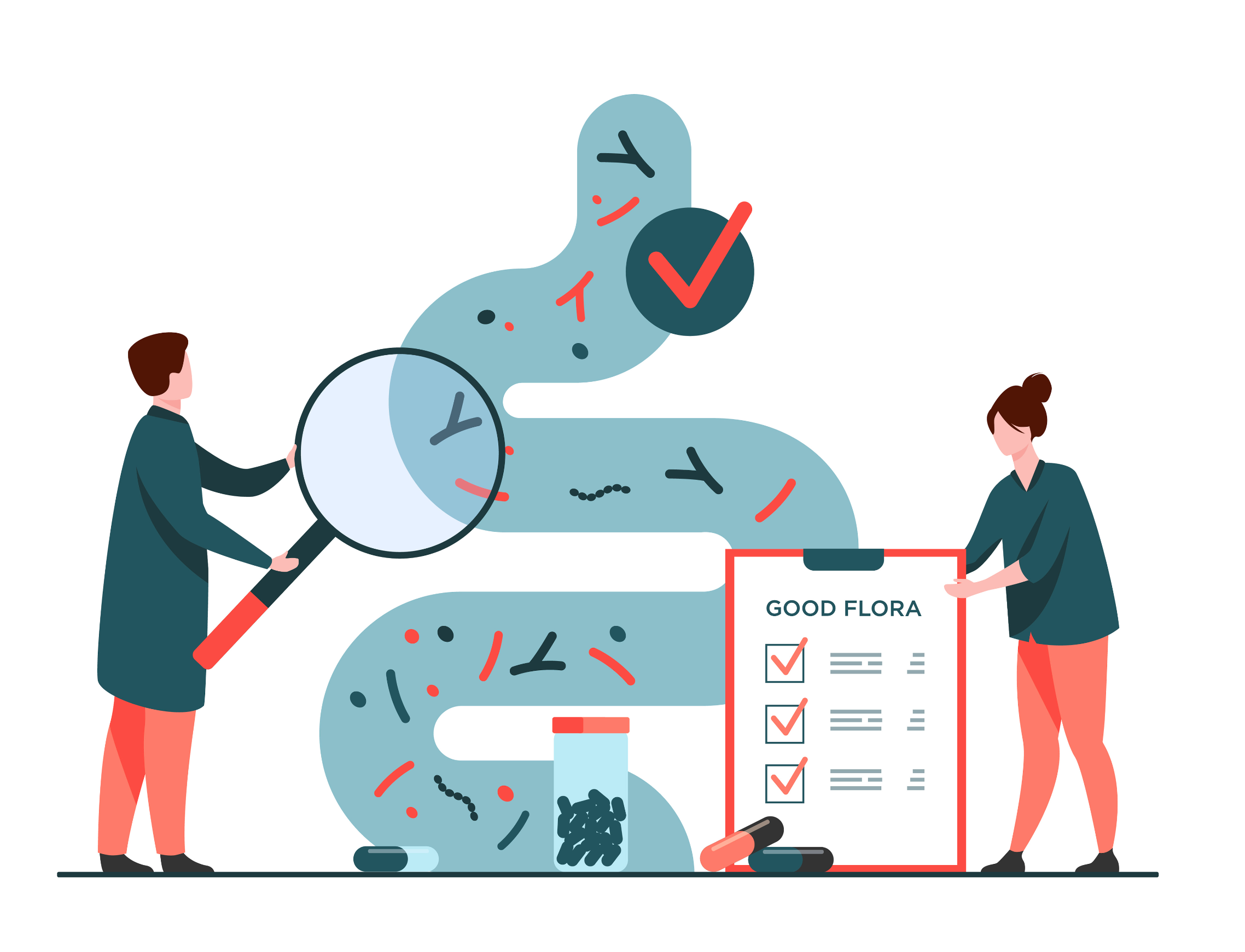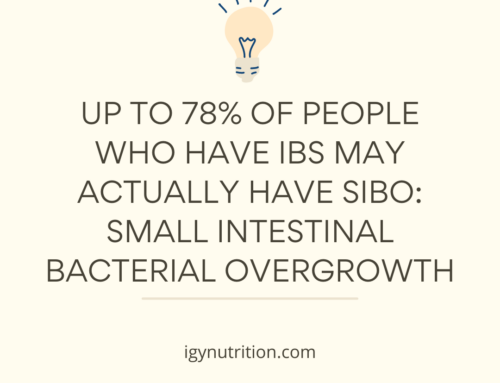Gut health is all the rage these days – but how do you know if your gut is healthy or not? Let’s get into it.
Quick Recap: What is Dysbiosis?
Let’s quickly go over what a healthy microbiome would look and feel like – and what the microbiome is in the first place.
Refresher: What is the Microbiome?
The microbiome is an ecosystem of millions of microbes – like bacteria, yeasts, and even fungi – living within or on the human body. The term “gut microbiome” refers to the microbes inhabiting the GI tract.
At first glance, microbes living in the body might sound pretty gross – but it turns out they’re necessary for our survival.
Many of the microorganisms living within us benefit our bodies by regulating metabolism, helping us absorb vitamins from food, supporting our immune system, and much more.
The thing is, not all of the microorganisms in our microbiomes are helpful. Some are harmful. These harmful microbes can damage the gut barrier, increase inflammation, and wreak havoc on our metabolisms, hormone production, immune systems, and even our mental health.
Plus, they can cause uncomfortable digestive issues like gas, bloating, and stool irregularity – no fun.
To minimize the gut damage and annoying symptoms the harmful microbes cause and maximize the benefits helpful microbes confer, we want lots of beneficial microbes and very few harmful microbes to live in our guts.
In a healthy microbiome, there are many more beneficial microbes than harmful microbes. The more beneficial microbes and the fewer harmful microbes there are, the healthier the biome is.
What is an Unhealthy Microbiome?
In an unhealthy microbiome, there are too many harmful microbes and not enough helpful microbes. This state of imbalance is called dysbiosis.
Dysbiosis, an imbalanced gut microbiome, is the culprit of most digestive health issues in America.
So – how do you know if you have dysbiosis? There are three primary ways to find out:
1. You have symptoms of dysbiosis
2. You’ve been exposed to causes of dysbiosis
3. Test for it
Clue #1: You Have Symptoms
Dysbiosis usually presents itself as a combination of some of these symptoms:
● Stool irregularity (constipation, diarrhea, or a mix of both)
● Excess gas
● Heartburn
● Nausea
● Bloating or distention
● Food intolerances
● Acid reflux
● Mental health issues
● “Brain fog”
● Unexplained fatigue
● Unexplained joint pain
● Frequent sickness
● Skin issues (acne, rosacea, etc.)
● Much more
If you have any of the symptoms listed above, you may be suffering from dysbiosis – and we strongly recommend testing for it. Read on to find out how.
If you have any of the symptoms listed above, you may be suffering from dysbiosis – and we strongly recommend testing for it. Read on to find out how.
A quick note – sometimes, patients with dysbiosis are asymptomatic. For that reason, we recommend investigating microbiome composition to anyone invested in their health.
#2: You’ve Been Exposed to Causes of Dysbiosis
The hard truth is most of us are regularly exposed to the primary triggers of dysbiosis:
● Alcohol
● Environmental chemicals like pesticides
● Food additives like emulsifiers, preservatives, and artificial sweeteners
● Poor dental hygiene
● Consistent consumption of highly processed foods
● Medications (especially antibiotics, proton pump inhibitors, and NSAIDs like Advil)
No need to feel guilty – these dysbiosis triggers are commonplace aspects of modern-day life.
But if life sounds a lot like this…
● You don’t wash your produce (pesticides)
● You drink alcohol
● You consume processed foods
● You take Advil
● You took antibiotics in the last year
…you’re at risk for developing dysbiosis. Read on to learn how to find out if you have an imbalance.
#3: Test Your Gut Microbiome
So, you’ve got some dysbiosis symptoms, and you’re ready to do something about it. Or maybe you’re asymptomatic but have encountered several triggers of dysbiosis, like antibiotics, processed foods, and pesticides.
Either way, testing your gut is a crucial step on your journey to wellness.
Stool testing – AKA, poop-in-a-box testing – is the primary method of testing your gut microbiome for dysbiosis. Yep, it’s pretty gross – but a sample of your stool gives scientists an inside look (literally) into your GI tract.
By analyzing the critters in your crap, scientists can profile your microbiome. They can see which beneficial microbes you’re lacking and which harmful microbes are in excess.
There are a few ways to go about getting a microbiome test done.
The best way to test your microbiome is to work with a healthcare professional like a doctor, nurse practitioner, or registered dietitian who regularly prescribes the Diagnostic Solutions GI Map Stool Test.
This test is the most accurate and thorough microbiome test out there. Healthcare professionals prefer it for its comprehensiveness. You must get a prescription for it – it’s not open to the public. Some insurance policies cover this test. Out of pocket, it runs for about $400.
Registered dietitians who specialize in gut health prescribe this test – just google search “registered dietitian GI Map Stool Test” to find a professional who can help you. They can help with your treatment plan as well.
Most doctors and nurses do not test the microbiome through third-party companies like Diagnostic Solutions because insurance doesn’t always cover the tests. Some do, though. They’re out there.
If you cannot find a healthcare professional who prescribes the test, or you cannot afford to consult with one, don’t fret – there are other options!
Several popular companies like Thryve, Viome, and BIOHM Health will test your stool for you – and they do not require a prescription. They include diet and probiotic recommendations based on your results. These tests usually cost between $100 and
$200.
The issue with these non-prescription tests is that they are less comprehensive than the Diagnostic Solutions test. They don’t test for as many strains of microbes and do not usually test for parasites; the Diagnostic Solutions GI Map Stool Test does.
It is imperative to rule out parasites if you are experiencing digestive distress. Surprisingly, millions of Americans are exposed to parasites each year. If you cannot afford the GI Map Stool Test, ask your doctor for a parasite test – these are usually covered by insurance.
After testing – whether you’ve decided to go through with testing or not – what’s the next step?




